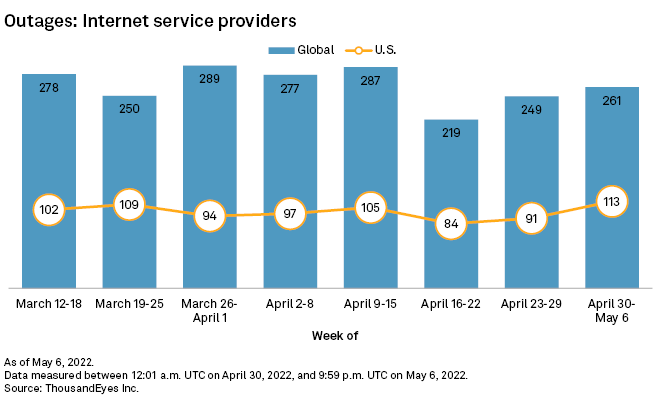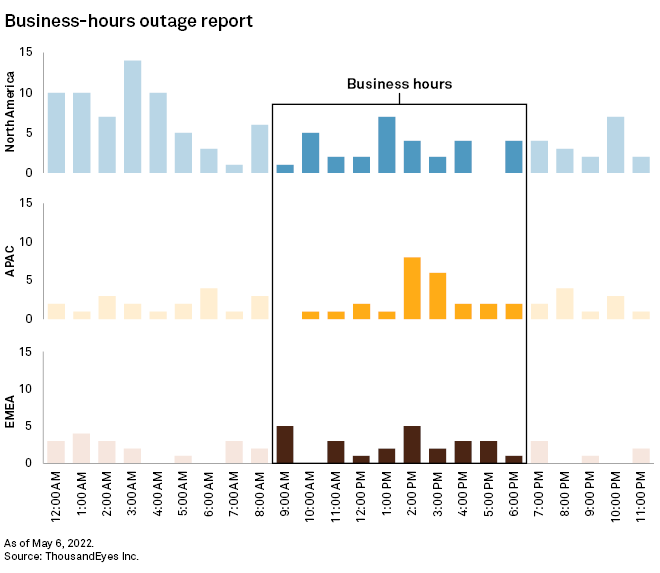This weekly feature from S&P Global Market Intelligence, in collaboration with internet service-monitoring company ThousandEyes, aims to give remote workers insights into internet service disruptions.
The number of US internet outages increased 24% to 113 in the week of April 30 to May 6, accounting for a greater share of the global total, according to data from ThousandEyes, a network-monitoring service owned by Cisco Systems Inc.
The US comprised 43% of all global outages during the week, compared to 37% the previous week. Global outages overall increased 5% to 261.

ThousandEyes detected two notable outages during the previous week, both of which impacted US internet customers.
Network transit provider Hurricane Electric LLC dealt with a disruption May 5 that impacted downstream partners and customers in countries across the globe, including the US, Canada, the UK, France, the Netherlands, Turkey, Egypt, Australia, New Zealand and Singapore. The interruption centered on nodes in Chicago; Dallas; San Jose, Calif.; Denver; New-York; Kansas City, Mo.; Minneapolis; and Portland. The outage, which lasted a total of one hour and twenty-three minutes across 10 occurrences over a period starting at 1:55 am ET, was finally cleared at about 5:25 am ET.
A day earlier, on May 4, Tier 1 internet service provider NTT America Inc. experienced an outage that affected customers and downstream partners across the US The disruption, which apparently centered on the NTT Global unit’s nodes in San Jose, Calif., ran for about 14 minutes and was fully cleared around 3:55 am ET.
Global collaboration-app outages during the past week fell to five, from seven the prior week. That included four in the US
Global business-hours disruptions slipped by 2 percentage points to 37%, but the total figure obscured larger swings regionally. In the US, for example, business-hours outages fell 16 percentage points to 27%. In Europe, the Middle East and Africa, meanwhile, business-hours disruptions surged 18 percentage points to 51%. Outages in the Asia-Pacific region increased 7 percentage points to 45% during the week ended May 6.

